In an age of mass tourism like today, places with stately, magnificent landmarks that are hundreds or even thousands years old draw people from all over the world to come and visit, marvel at the impressive monuments, and feel that they’ve become part of the global community. Sharing space and rubbing shoulders with many other tourists at places like Angkor Wat in Cambodia or Thailand’s Grand Palace is now the new normal, although our egos undoubtedly wish otherwise so we could enjoy these sites in a much more peaceful and relaxed way, and take as many photos as we like. In spite of that, people keep coming to such places for an obvious reason: because they are worth seeing at least once in our lives.
However, taking a detour from the well-trodden path to allow ourselves to get ‘lost’ and end up in places many don’t even consider visiting often rewards us with some of the most unforgettable travel experiences. To me, this happened on my trip to a small city called Blitar a year ago.
Mention the name of the city to any Indonesian, and the response would likely be an awareness that such a place does exist, with the vague idea that it is located somewhere in Java. When I told my parents that I was going to this city of a little over 130,000 people, they checked their old atlas only to discover that it wasn’t even marked on the map. While the nearest airport is about two and a half hours away at Malang – a small airport served only by a few flights a day – the closest one serving international flights is a four- or five-hour drive away at Surabaya. Taking the train from Jakarta is more straightforward, though the journey takes more than 15 hours.
If reaching Blitar requires so much effort, is it really worth visiting?
When James and I arrived in the city, a calm ambiance was palpable, and the pace of life seemed considerably slower than the one we are used to in the Indonesian capital. Traffic jams were nonexistent, and tall glass skyscrapers were conspicuously absent. We stayed in a beautiful mid-19th-century mansion built in the Indies Empire style which, thanks to its current owner, was turned into a museum-like hotel with guests coming from far-flung places like the Netherlands. While the Dutch might come to see the relics of a bygone era in their former colony, many Indonesians visit this low-key city in East Java province due to its historical connection with one of the founding fathers of the nation: Sukarno, Indonesia’s president for 22 years.
Gebang Palace is one of the Sukarno-related sites in Blitar which, despite its name, is in fact a rather humble affair. Consisting of several bungalows, this was the house where Sukarno spent his high school years. Portraits and paintings of him alongside the bed, chairs, and other things he used during his time living in the house were proudly displayed throughout the museum. Pilgrims who come to this unassuming city would certainly be delighted to see how their beloved president is still venerated long after his death. A friend of India’s Jawaharlal Nehru and Yugoslavia’s Josip Broz Tito, Sukarno was and still is seen by many as a president who boosted Indonesia’s profile on the world stage. His critics, however, see him as a confrontational head of state who instigated a conflict with Malaysia, threatened to annex India’s Andaman Islands in support of Pakistan (despite Indonesia’s initial warmth toward India), and actually revoked Indonesia’s membership in the UN – not to mention his policies that pushed the economy into a downward spiral.
The pilgrimage trail then took us to Sukarno’s final resting place, a marble tomb underneath a three-tiered roof embellished with ornate wooden carvings on the ceiling. People gathered around the rectangular grave, spreading flowers – from rose petals to sweet-scented cananga – and praying. A stark contrast to the traditional Javanese architecture of the tomb, a modern building stood a few meters away, housing a museum that showcases Sukarno’s life from his childhood to his time as president.
Yet, Sukarno is not the only founding father Blitar is associated with.
More than 700 years ago when Java was still predominantly Hindu, a Singhasari prince successfully defeated the invading Mongol army, one of only a few places in the world that managed to curb the ever-expanding realm of the Asian nomadic people. Raden Wijaya, the victorious prince, subsequently founded a new kingdom called Wilwatikta, better known today as Majapahit. Taking the title Kertarajasa, the new king ruled for sixteen years, not long enough to see how Majapahit would grow into a prominent power in the region whose territory, as some historians believe, encompassed most of what is now modern-day Indonesia, Malaysia, Singapore, Brunei and the southern Philippines. This expansion began in earnest under the rule of Queen Tribhuwana Wijayatunggadewi, the third ruler of Majapahit who was also the daughter of Kertarajasa himself.
Upon the death of Majapahit’s first king, a mortuary temple was erected and dedicated to him. Today, however, that temple is all but gone; its foundation and the stones scattered around it are the only things that remain from the early 14th-century structure. Known today as Candi Simping, the ruins were almost deserted by the time of our visit. A friendly caretaker looked happy to see us and chatted a little bit about the politics in Jakarta during the months leading up to the gubernatorial election marred by ugly and highly-divisive campaigns which grabbed the nation’s attention. As a matter of fact, the incumbent deputy governor of Jakarta at that time had served as the mayor of Blitar before moving to the capital. Highly popular during his two terms leading the East Javan city, you can guess which side the caretaker supported even though he couldn’t vote in Jakarta’s election as a resident of Blitar.
At a modest security post guarding the entrance to Candi Simping, a fading print out displayed how the temple would probably have looked during its heyday: a slender and elegant edifice resembling one of the structures at Candi Penataran – which is among the most impressive and expansive ancient temple compounds in East Java and just a half-hour drive from Blitar. Unfortunately, due to the lack of original stones, full reconstruction of Candi Simping is unlikely to happen.
At the center of what was the foundation of the temple sits a rectangular stone with a turtle and entangled Naga serpents carved on the top. Around the lower parts of the foundation, reliefs of animals have been chiseled into the dark volcanic rock, along with floral patterns and mythical beasts. On the left hand side, a row of giant Kala heads which typically adorn a Hindu/Buddhist temple lay helplessly, baked under the scorching sun and showered by the tropical rain for centuries. On the right, a row of Makara and other creatures are also facing the same fate. The shrine to the founding father of Majapahit is sadly more a reminder of the kingdom’s decline, instead of its rise – probably what Kertarajasa himself would have thought if he could see the poor state of Candi Simping today.
Tranquil Blitar was not only the hub for excursions James and I did to some important centuries-old temples and ruins, but it was also where I tried some unique dishes I had never tasted before. Among them was kotokan kutuk, fried snakehead fish smothered in a rich sauce of coconut milk with tomatoes, chilies, and bilimbi fruit – the latter gave the dish its refreshing, tart kick. Others were more like a local take on some Javanese dishes I was already quite familiar with, including tahu tek: fried tofu with sweet soy sauce, shrimp paste and palm sugar, served with friend peanuts, crackers, pickled cucumber, and a dollop of sambal.
On the sweet side, kue lumpur telo ungu was an indulging, if not sinful, treat inspired by the regular kue lumpur (“mud cakes”). Instead of potatoes, the mud cakes I had in Blitar were made from purple yam, and instead of raisins, the topping was sliced banana which made the cake look even prettier and more colorful. We also sampled some jajanan pasar – a collective term for traditional cakes and sweets typically bought in markets – at our hotel. The diamond-shaped brown wajik was made from sticky rice, palm sugar, coconut milk, and infused with pandan leaves. Meanwhile rice flour and sugar were used to make both the pink-colored apem kukus and the green talam with an arrow-shaped cut of pandan leaf on top of it. In addition to them, boiled peanuts and fried fermented cassava with granulated palm leaves were also served, filling our stomachs to the brim.
Despite its potential, Blitar still is under the radar for most tourists, which adds to its small-city charm. It appears that things won’t change anytime soon unless an airport is built near the city, or the main roads that connect it to other cities in East Java are widened, or a high-speed railway which goes through Blitar is constructed. So far none of these lofty ideas have been translated into an actual plan. For how much longer? No one really knows.

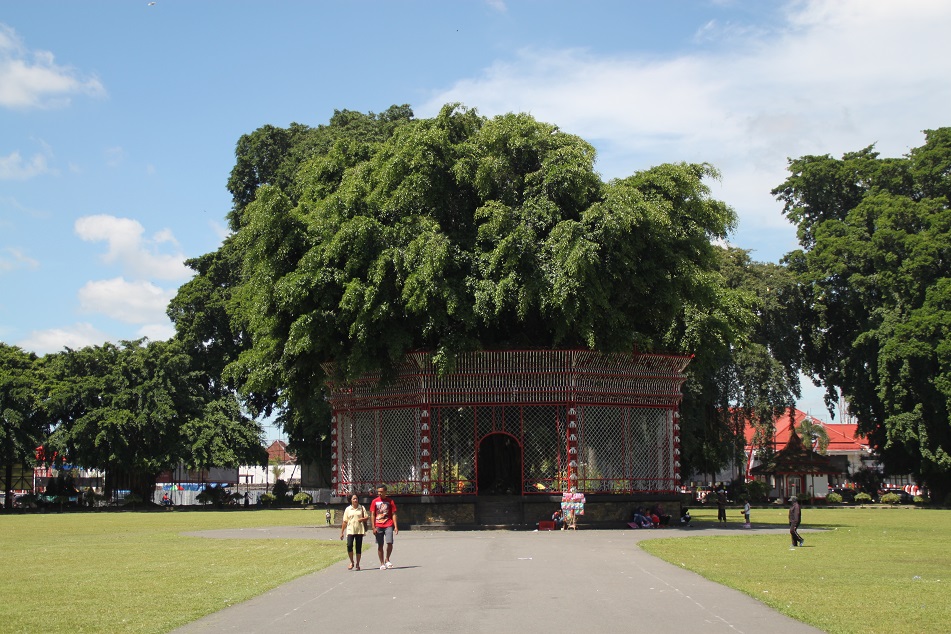




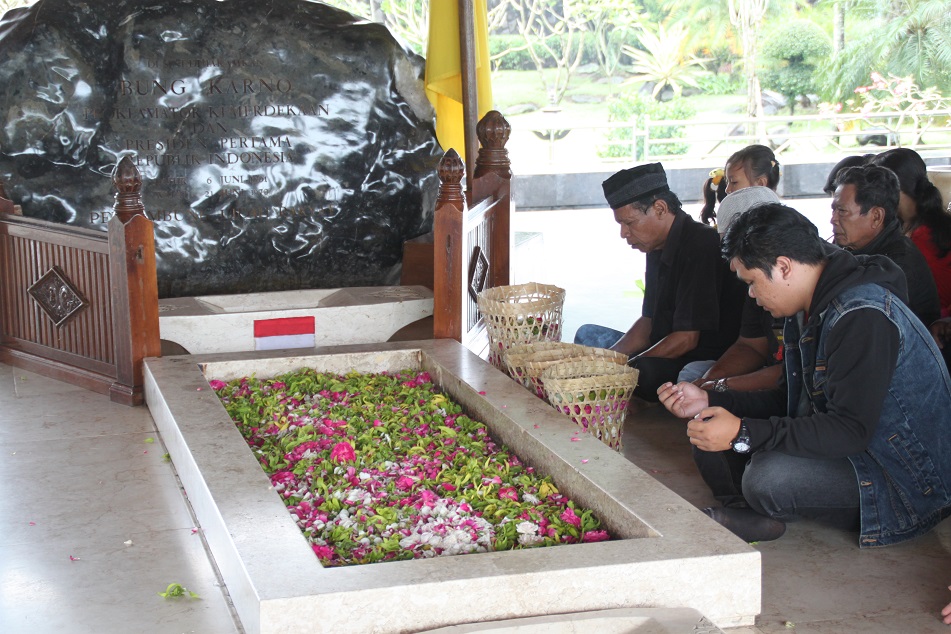

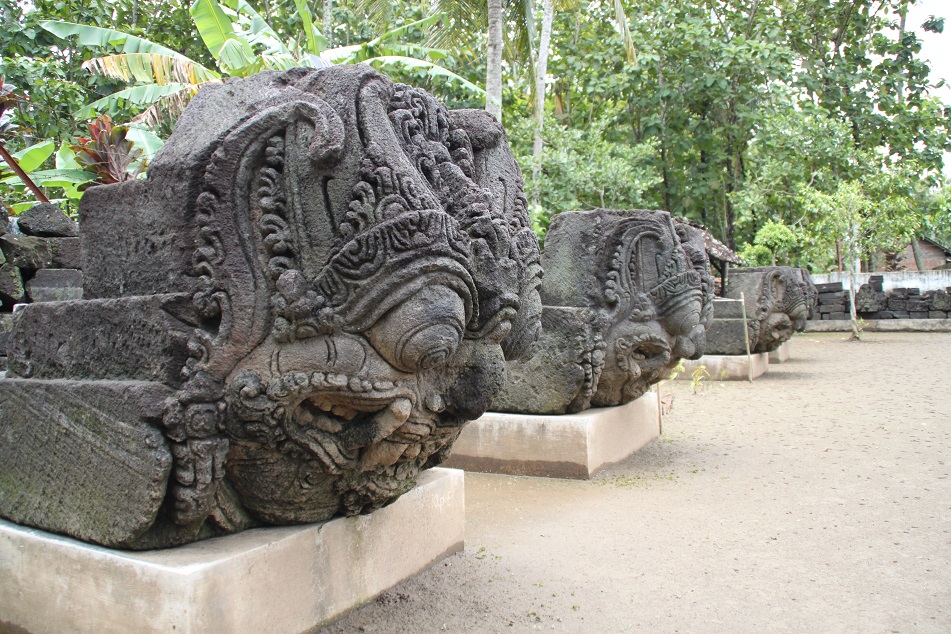

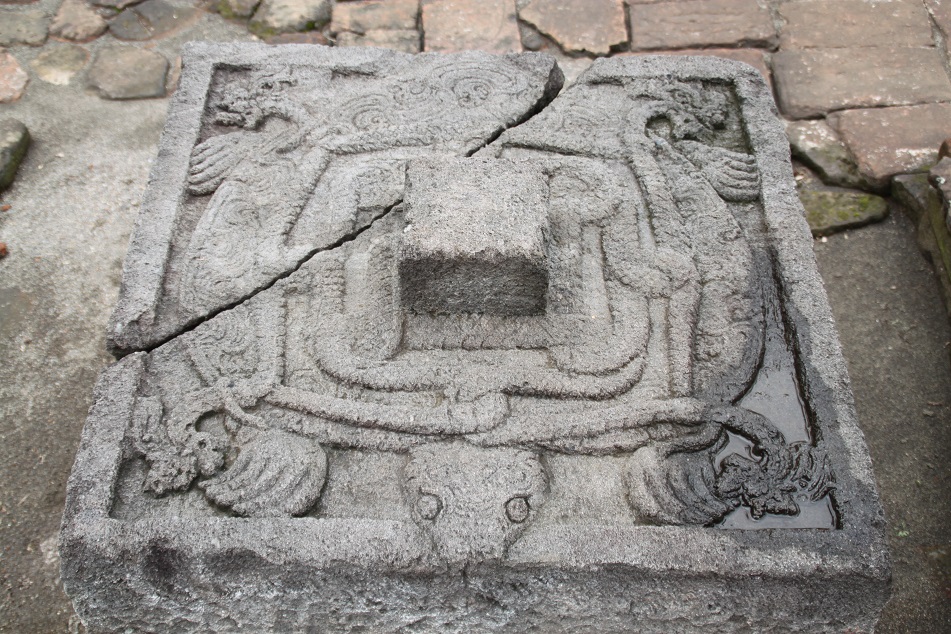
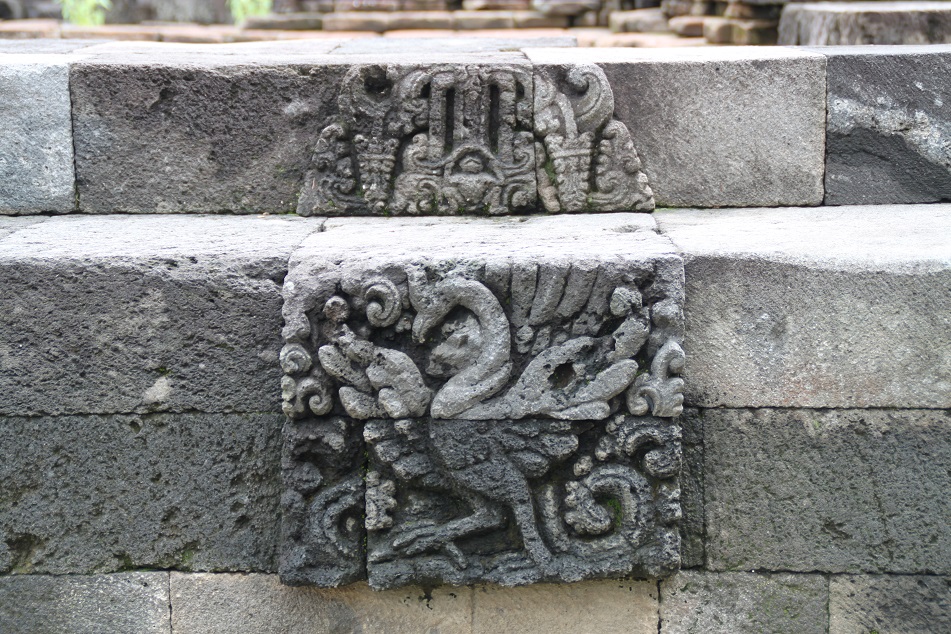
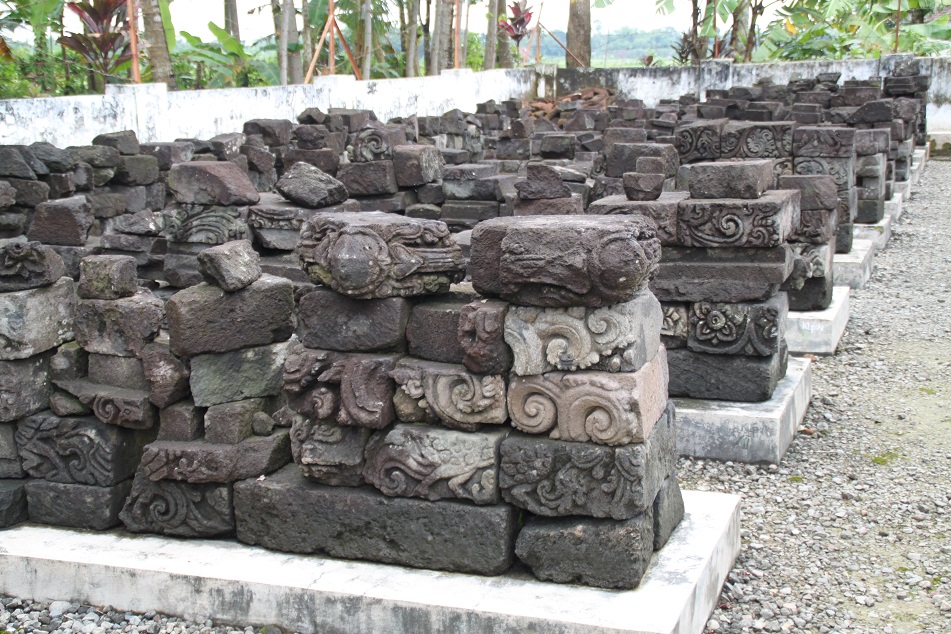
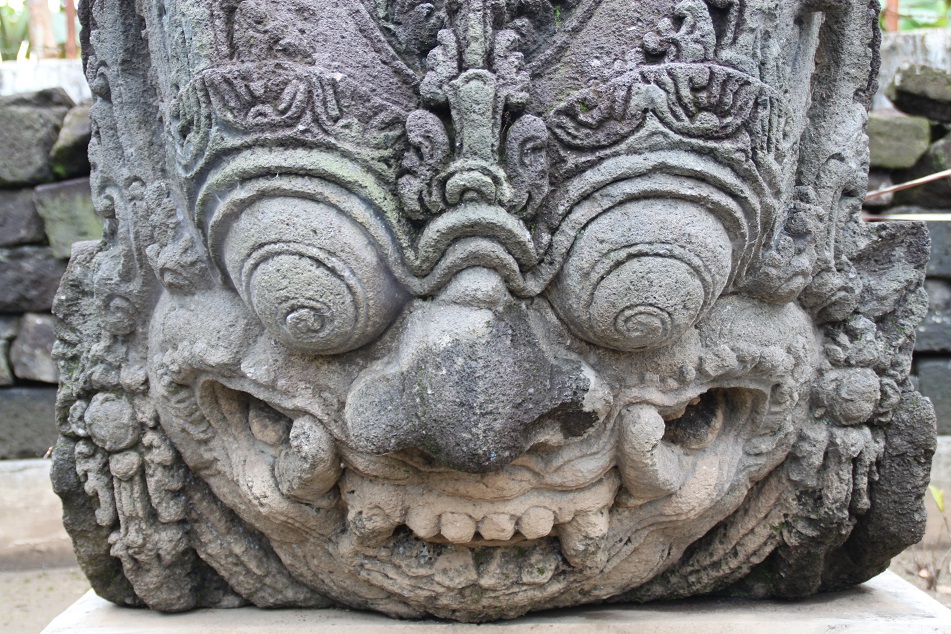





The reward for those who are willing to get off the beaten path and enjoy cultural treasures away from the tourist crowds is indeed very great. Your post makes this abundantly clear. Thank you, Bama!
LikeLike
I think an ideal trip would include places that are famous the world over — often for good reasons — as well as those even the locals don’t really frequent. Blitar clearly falls in the latter category. Thanks for reading, Peter!
LikeLiked by 1 person
Bama after recently batlign the crowds in Angkor Wat and in Thailand your post really resonates with me. I’m glad to have seen these places but wish I had been able to 20 years prior. Thank you for taking us off the beaten path with you. However I am thanks but no thanks to fried snakehead fish no matter what it is smothered in. 🙂
LikeLike
I have never been to Venice or Barcelona, often cited today as places which are overrun by tourists. But from what I read they’re both highly popular for a reason, the exact same reason that makes me wish to visit them one day. We might not get the chance to go to places we want to visit so much at the time we desire. It may take three, five, ten, twenty years to finally go there. But when that chance does arise, I think we should take it wholeheartedly for it may never come again.
Thanks for reading and for sharing your thoughts, Sue. And about the snakehead fish, despite its name, it’s actually just a normal fish, with fins and bones. 🙂
LikeLiked by 1 person
Oh I didn’t know that Bama. Well now I will reconsider it as a menu choice! 🙂
LikeLiked by 1 person
wah enak banget tuh kacang godog nya
LikeLike
Kebetulan dari semua makanan yang saya coba di Blitar, kacang godognya justru yang paling mengecewakan soalnya agak terlalu asin. Mungkin waktu itu yang merebus melamun dan gak sadar masukin banyak garam. 🙂
LikeLike
haha, kepengen nikah mungkin yang tukang masak
LikeLike
Bisa jadi. 🙂
LikeLike
atau masnya mungkin yang pengen nikah sama chef nya
LikeLike
😀
LikeLike
Mampir ke rumah dong 😀 nanti tak anterin muter-muter di Blitar~ Rumahku 30 menit dari kota blitar 😀 Not only cultural, blitar also have some beautiful beaches on the southern part.
LikeLike
Betulll, pas di sana sempet dikasih tau juga kalo pantai di Blitar bagus-bagus. Sayang waktu itu cuma sebentar, jadi waktunya cuma cukup buat keliling kota Blitar sama ke Candi Penataran. Maybe next time! 🙂
LikeLike
I love how you describe this city as a tranquil Blitar. I decided to visit Blitar in 2016 because of its calmness and tranquility. Adequate sidewalks, no-rushing people, less car horn on the streets, lovely! In spite of its hot weather, I can still feel the chill ambience, somehow (and their iced local-chocolate was really a blessing for sure). Too bad, I didn’t try that kue lumpur telo ungu. It looked tempting lol.
LikeLike
The calmness of Blitar really is a treat for those who live in big cities like us, isn’t it? A blogger friend who also went to the city wrote how sweet the star fruit she had there. Unfortunately I didn’t get the chance to try it. Thanks for sharing your thoughts, Iyos!
LikeLike
Then you have one good reason to come back to Blitar :))
My pleasure, Bama.
LikeLiked by 1 person
Sensational post – when you discussed the hidden value of getting off the beaten path and still finding treasures. Still able to feel the history and culture, perhaps at an even more personal level because of less crowds and more serenity ~ can make an experience more special. The ambiance of Blitar you paint so well, and yet another travel destination for me thanks to your writing and adventures 🙂 Cheers to a good week ahead.
LikeLike
I can’t imagine a place like Blitar being overrun by tourists, because its tranquility is exactly what makes this small city so pleasant and relaxing. When you have ample time to explore Java one day, I hope you’ll get the chance to visit Blitar, Randall. Just half an hour from the city center lies East Java’s largest ancient temple ruins which I wrote I while ago: https://harindabama.com/2017/07/30/penataran-appeasing-the-mountain-god/
Thanks for reading and have a great week ahead too!
LikeLike
What a spiritual experience. To visit places still undiscovered by an ever-changing and ever engrossing tourist industry. I especially was fascinated with the bit you mentioned about Mogul and Hindu relations. I experienced such history during a backpacking trip though India. When I left India I felt like I may never visit again because the experience was so overwhelming for me, I think I even experienced some PTSD from it (call me crazy), but the older I’ve become, the more often I look back on that experience and realize that I learned so much and saw things in such a close minded way. I kind of digressed, but your experience kind of highlighted those emotions for me again.
Jess
LikeLike
That trip to Blitar inspired me to do similar trips in the future as there are so many supposedly-interesting places which are off the radar of most tourists. Speaking of Mogul, I believe you’re referring to the Mughal Empire whose etymology suggests the Mongol origin of the dynasty that established the empire. Isn’t it amazing to think that nomadic people from a vast land that is modern-day Mongolia once conquered half of the known world?
Traveling does teach us in many ways, doesn’t it? Sometimes we get the lessons while we’re on the road. But there are times when it takes many years before we realize something valuable from our past travels. Thanks for sharing your memory, Jess!
LikeLiked by 1 person
You said it ALL better than I could have ever. 100%%%%%% ❤️
LikeLiked by 1 person
The first time I visited Blitar was more than 10 years ago. A lovely city. Thank you for telling your story, Bama.
LikeLike
It still is a very nice city today, although it might get a little busier than the last time you were there. My pleasure, Fiberti! And thanks for reading.
LikeLike
What a great find Bama. The joy of exploring ancient monuments without having to rub shoulders with hordes of people is in itself worth the effort. Sounds like a place I would love to include in my itinerary. Even just for the food! I am not much into food, but your description and photos has me hooked 🙂
LikeLike
True, especially in a time when mass tourism has become the norm in many places. I think having a little bit of everything — ancient temples, colonial houses and delicious food — Blitar is a place you would definitely enjoy, Madhu. One thing I didn’t try while in the city was their starfruit, which is apparently really good.
LikeLike
What a nice city. It has its own heritage and distinct cultural design. I wish i could travel around like you. 🙂
LikeLike
Traveling has become more and more affordable and easier now, so I hope you’ll get the chance to explore more of this beautiful planet we live in.
LikeLiked by 1 person
Thanx 😁
LikeLike
I think some cities in East Java feels so calm and peace. Very comfortable. Best choice where to live when we are not young anymore.
Bondowoso, Bojonegoro, and Madiun are some of them. And now I think Blitar also. Someday I will visit this city and feel the calm and peaceful of the city. 🙂
LikeLike
I think in general a lot of small cities on the island are good places for retirement. I have yet to visit Bondowoso and Madiun, so I think I should consider going there one day. Oh and Kediri, one of the places in East Java I want to see the most.
LikeLiked by 1 person
Yeahh that’s right.
LikeLike
Always interesting to know about the new city and the cultures. 🙂
LikeLike
Glad you enjoyed reading this post, Hariom! 🙂
LikeLiked by 1 person
Blitar is indeed a hidden gem, Bama – I’m glad we had the chance to visit and explore a less-heralded part of East Java. It was utterly fascinating to see how people still revere Sukarno even now, more than 50 years since his passing, and then contrast that with the solitude we found at the forgotten ruins of Candi Simping. I guess few people care to remember the founding father of the long-lost Majapahit Empire.
LikeLike
Blitar was a place I never dreamed of visiting just because it was too obscure for my younger self. So when the chance finally came, I definitely said yes, and it really didn’t disappoint. One of my coworkers has been asking about Blitar, actually, but I told him that it’s not the easiest city to reach in East Java. Speaking of the history of Majapahit, it’s really sad and disheartening to know that history teachers at some schools deliberately skips chapters on Hindu/Buddhist kingdoms in Indonesia. I really hope that this is rather an anomaly than the norm.
LikeLiked by 1 person
Ah! Wonderful.
…for the love of getting lost.
LikeLike
So true. Getting lost — at the right time — can lead us to unexpected ‘discoveries’. Thanks for dropping by, Elizabeth!
LikeLike
ah baru baca ini. blitar menyenangkan yaaa.. cocok buat jalan-jalan santai.
kalian nginep di tugu kan? nggak minta tur sepeda keliling kota?
waktu itu kami dipandu naik sepeda sampe ke kampung belimbing, dan belimbingnya memang enakkk. tapi sama sih, nggak sempat ke pantainya.
LikeLike
Banget! Hawa kota kecilnya bener-bener bikin betah. Yes, kami nginep di Tugu dan selama di sana memang sempat ambil beberapa paket yang ditawarkan sih, mulai dari dinner di Candi Penataran sampai kelas masak.
LikeLike